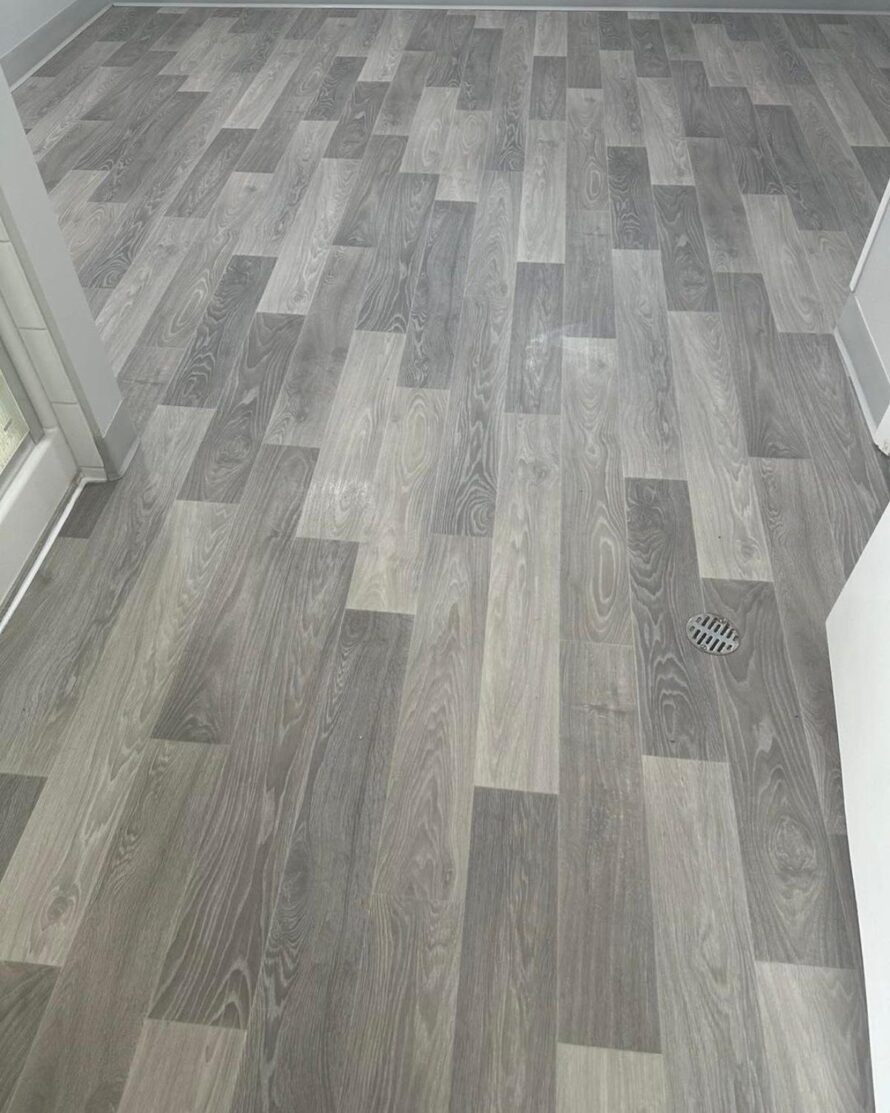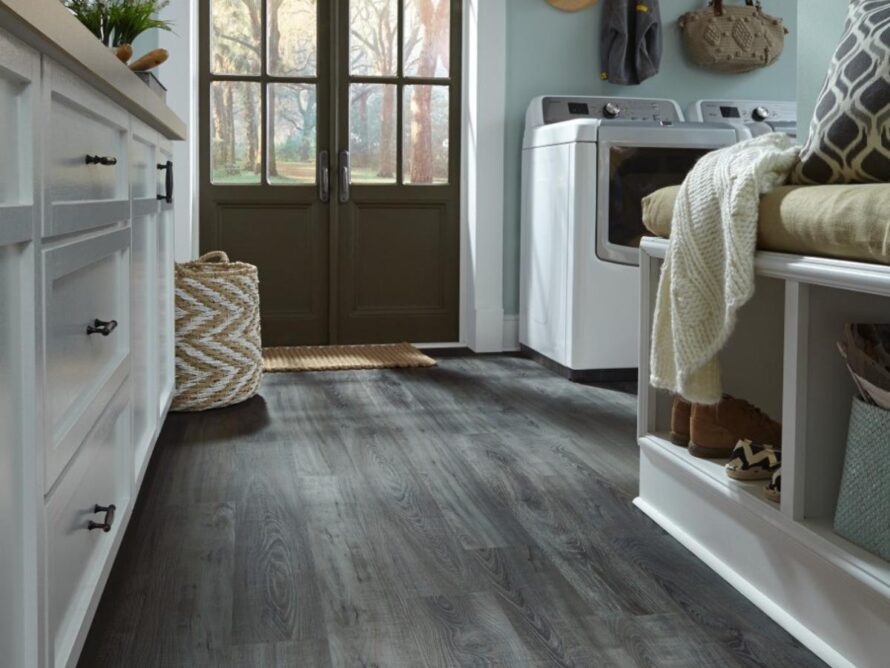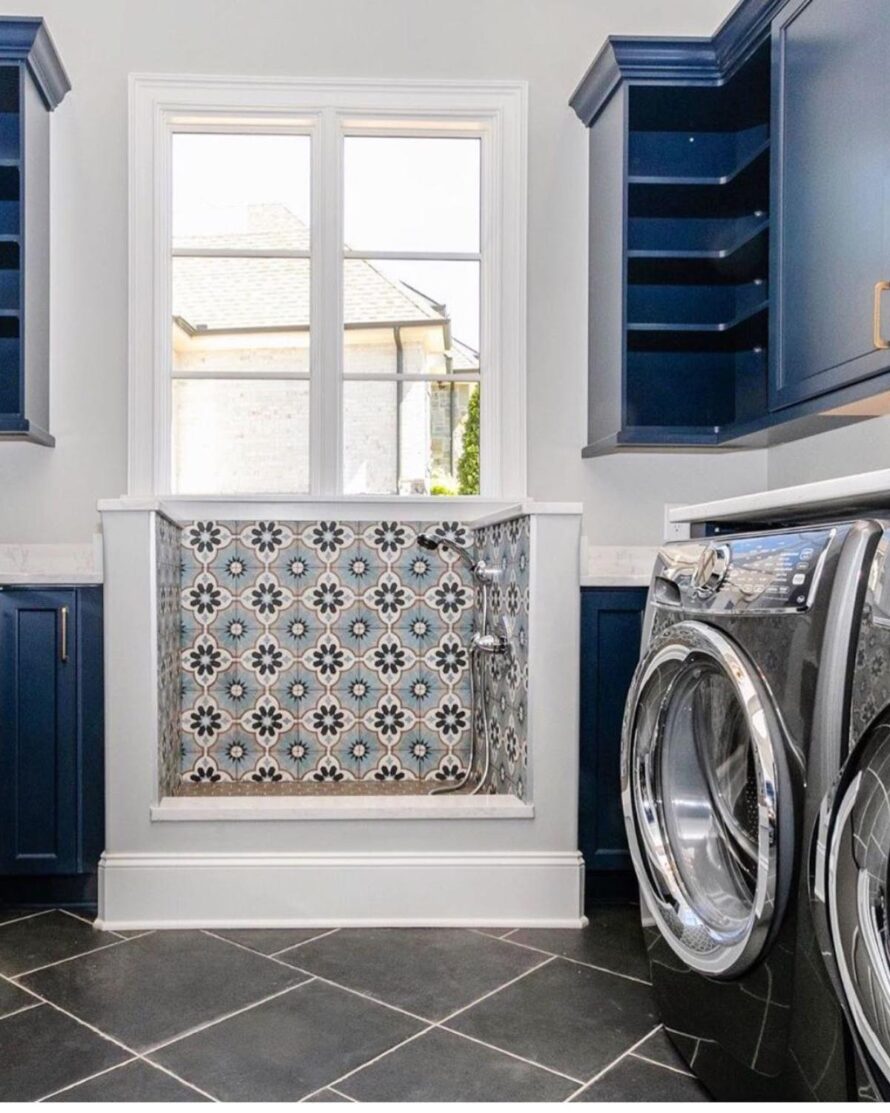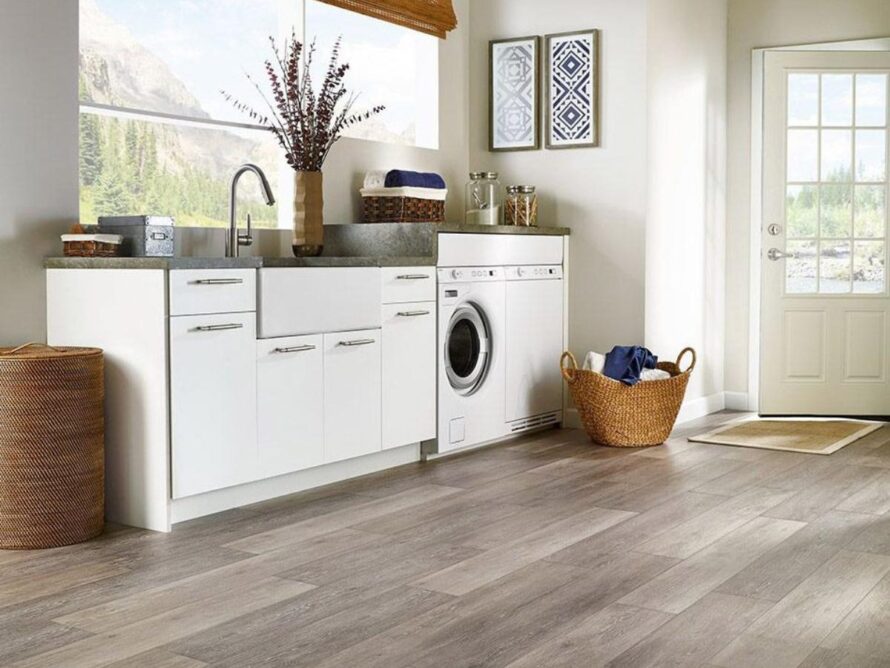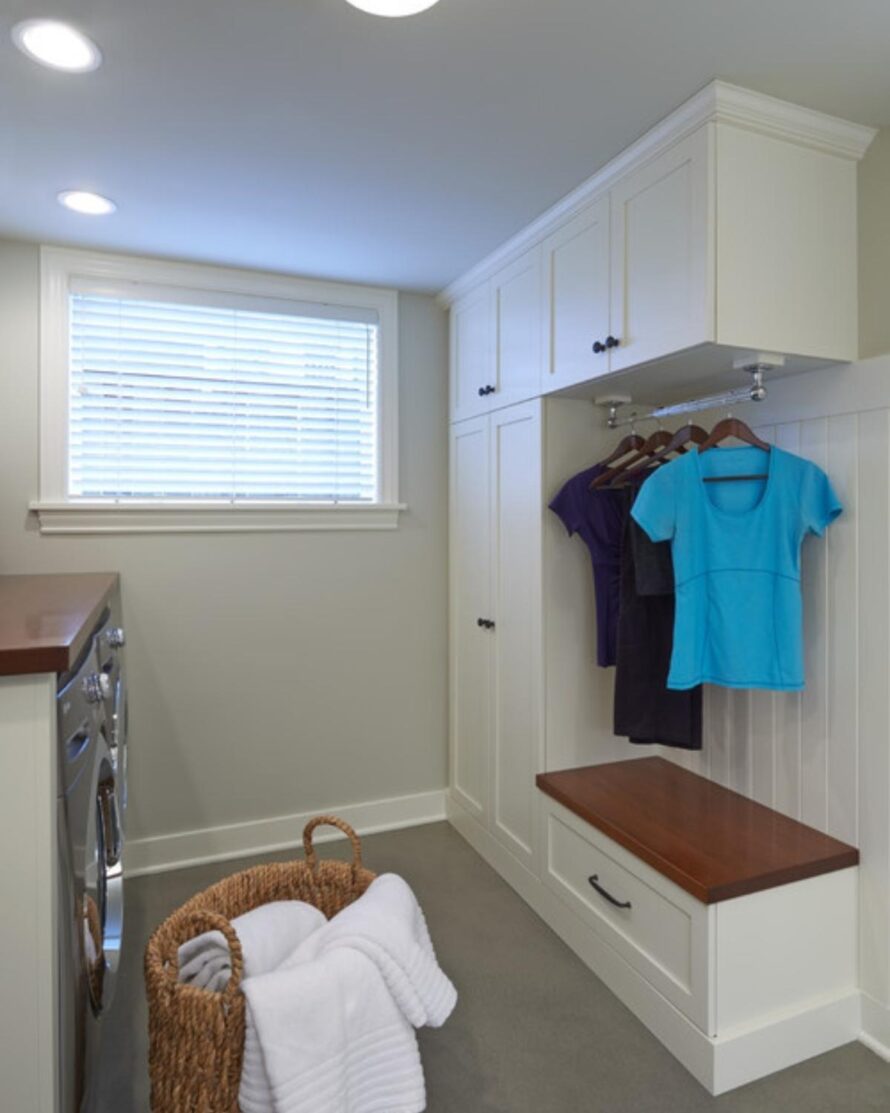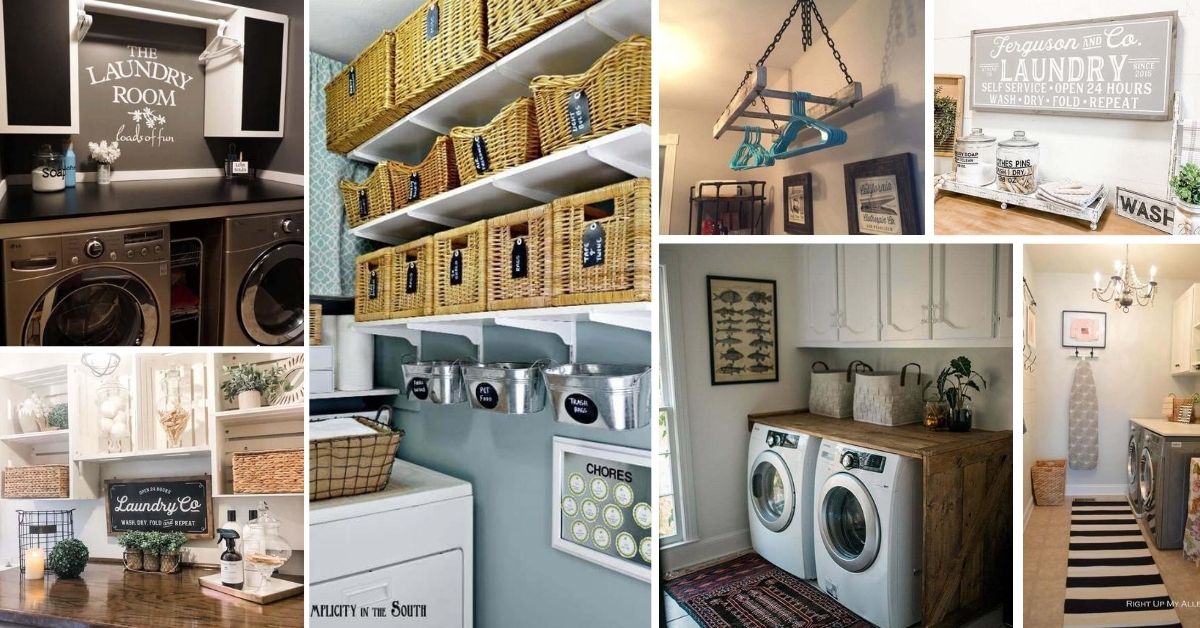Laundry room flooring should be functional, easy to clean, beautiful, and comfortable. Bonus points if it can stand up to cleaner spills and is stain-resistant.
Is it durable, affordable, and can stand up to foot traffic and moving appliances while still looking attractive and cohesive with your home? If so, even better!
All the qualities mentioned above are integral for laundry room flooring, but the most critical is water resistance.
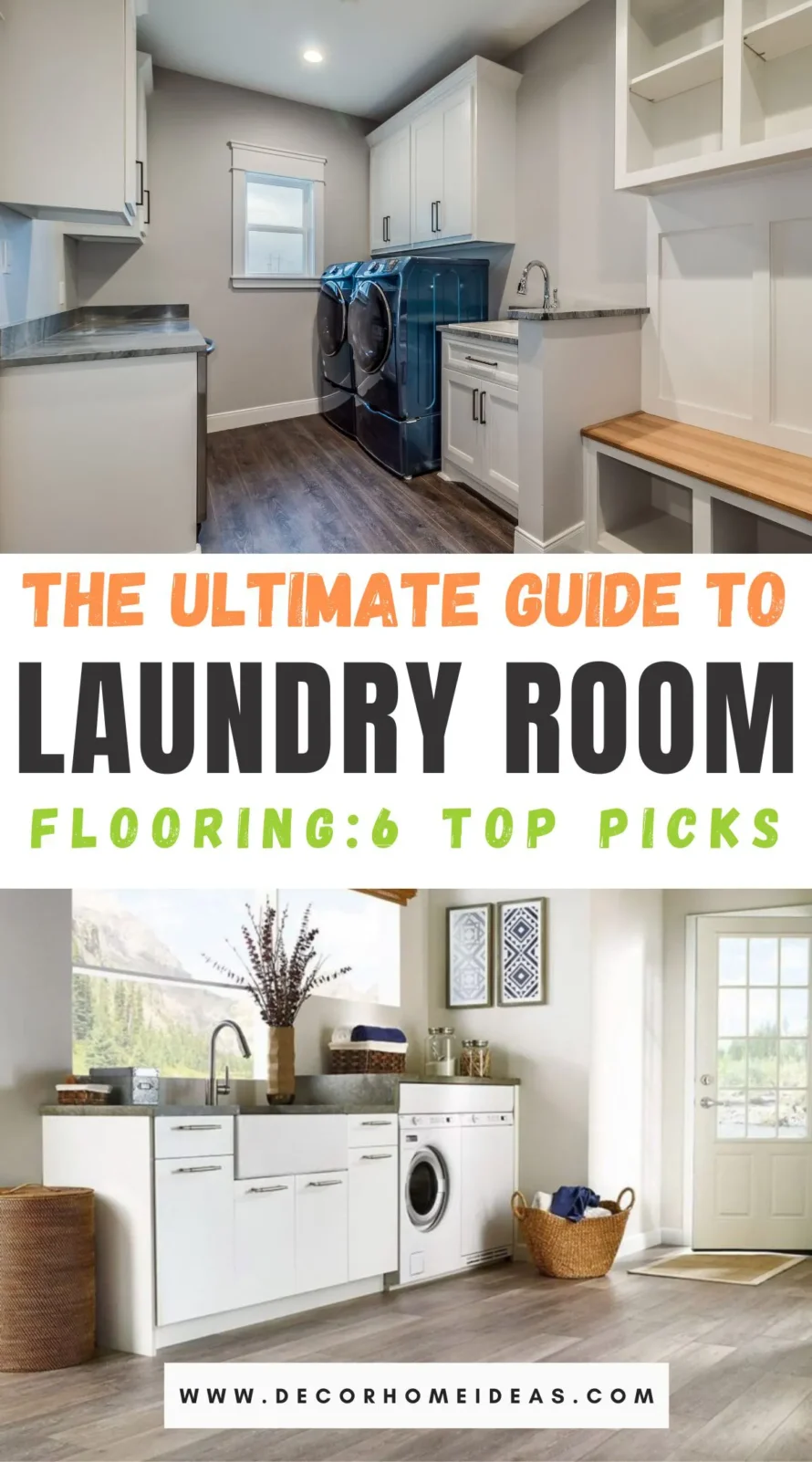
Moisture is the biggest concern in laundry rooms, and preventing water damage is critical. Water can come from basic laundry room activities or emergencies such as a clogged drainpipe or an overflowing washing machine.
In this article, we’ll assess the pros and cons of 6 popular laundry room flooring and rule out five types you should avoid.
Types of Laundry Room Flooring
Sheet Vinyl Flooring
| Pros | Cons |
| Inexpensive | Low resale value |
| Few seams | Difficult to self-install |
| Waterproof | Plain appearance |
Sheet vinyl flooring is probably the best moisture-proof option for laundry rooms if we discuss a single, seamless piece of waterproof material. Sheet vinyl comes in 12-foot wide rolls, and you can install a piece of it and avoid seaming altogether as long as your laundry room’s width is 12 feet or less. As for the cost, sheet vinyl will cost you between $1.50 – $20 per square foot.
Sheet vinyl becomes a highly reliable waterproof laundry room flooring when combined with a thermoplastic rubber wall base molding, a type of baseboard. If the wall base molding and the vinyl floor retain their seal, this floor, in addition to some more vertical 3 – 4 inches, can contain even minor flooding.
Sheet vinyl also sustains well in traffic, and you can lay another sheet right over it if the floor ever needs replacing. You only need to have the lower floor in good condition to add another layer of sheet vinyl.
Laminate Flooring
| Pros | Cons |
| Easy to clean | It can’t be refinished |
| Easy to install by yourself | May delaminate |
| Inexpensive | Not waterproof |
For decades, laminate flooring has been considered one of the most economical DIY installations. This type of flooring will cost you between $1.70 and $17 per square foot.
Even though you can choose laminate flooring for your laundry room, it poses a risk of damage due to repeated minor water pooling or flooding. The flooring will likely swell or delaminate once the base fiberboard core is exposed to even the tiniest water.
You ought to tightly seam laminate flooring in the laundry room, and as a precaution, use a pan under the washing machine.
Tile Flooring
| Pros | Cons |
| Easy to clean | It needs a solid base |
| Waterproof | Cold and hard |
| Wide range of styles | DIY installation difficult |
If installed well, porcelain and ceramic tile are waterproof, easy to clean, and durable, making them classic laundry room flooring materials. Tile is innately cold and can be hard to stand on for long periods. However, you can eliminate this by adding gel or fabric mats or radiant heating. Tile flooring will run you between $3 and $330 a square foot.
Bleach or petroleum-based products won’t affect tile flooring since it’s solvent-proof.
Adorning your laundry room with tile will give you a solid, firm base for your dryer and washer. There’s no flexibility with grout or tile.
Luxury Vinyl Flooring (LVF)
| Pros | Cons |
| Easy to install by yourself | Not environmental friendly |
| 100% waterproof | It cannot be refinished |
| Inexpensive | Seamed material |
From a distance, a luxury vinyl plank looks more like real wood. This flooring measures up to 48 inches long per plank, with a rigid, solid core LVF being 7mm thick. This type of LVF more closely approximates laminate flooring compared to earlier iterations of LVF. LVF will cost you about $1.50 and $20 a square foot, which is on the higher end of the vinyl flooring range.
Even though luxury vinyl is a DIY dream, you must ensure you tightly seam the boards on all four sides in order for the flooring to stay waterproof.
Concrete Flooring
| Pros | Cons |
| Easy to clean | Hard to stand on for long periods |
| Generally waterproof | Unattractive on its own |
| Durable | Cold |
Concrete flooring is a default choice in most laundry rooms since that’s what’s already there. There’s no need to install a concrete floor covering for it to be a reliable, hardy flooring choice for a laundry room. Concrete will cost you about $2 and $8 per square foot.
You can improve your concrete flooring by staining, painting, or acid-etching. You can also add an outdoor area rug to soften the look and make it warmer under bare feet.
Engineered Wood Flooring
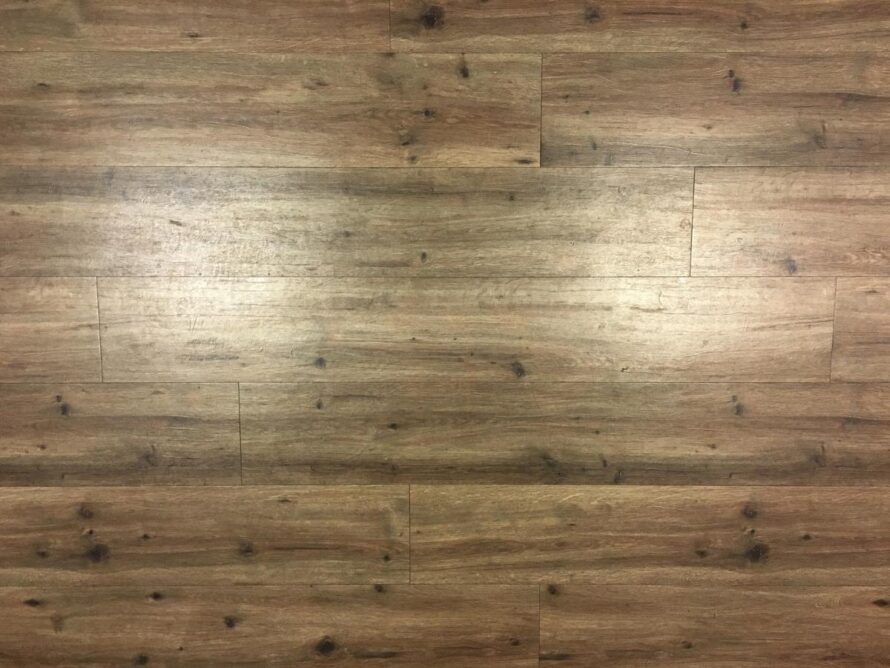
| Pros | Cons |
| Charming | Chemicals damage it |
| Greater choice than solid wood | Expensive |
| High resale value | Veneer may delaminate |
Engineered wood flooring is costly but provides a home with real wood without the challenges of solid hardwood flooring. The high-quality plywood base used in engineered hardwood is dimensionally stable and less prone to moisture damage. Engineered hardwood flooring costs between $4 and $8 per square foot.
The hardwood in engineered wood flooring is just a thin layer attached to a plywood base, so its looks are only skin-deep. Damaging that top player doesn’t take much. Ensure you use a pan under the washing machine when dealing with other delicate laundry room floors.
Disregard These Types of Laundry Room Flooring
Marble
Marble is well-known for standing up to moisture and water. However, it can also become slippery, posing a significant risk of flooding. Furthermore, marble stains with water exposure, so it isn’t an ideal choice for a laundry room if you don’t like the patina resulting from the etching and staining. By sealing it annually, you can ward off some staining, but it isn’t foolproof. Marble flooring will cost you about $20 per square foot.
Carpet
A carpet tends to become severely damaged by water, soaking up moisture and mildew, making it a bad choice for flooring in a laundry room. Marine-grade carpet isn’t an exception. However, if you choose to floor your laundry room with a carpet, it will cost you $4.50 per square foot.
Bamboo
Bamboo is slightly more moisture-resistant than hardwood but can still expand and warp when exposed to water. Therefore, investing in bamboo flooring with a laundry room’s flood risk isn’t worth investing in. Also, installing such a floor will cost you $7 – $20 per square foot.
Mosaic Tile
Mosaic tile can’t handle the heavy machinery in the laundry room; hence, it’s a poor choice for such a space. The grout lines can become stained, or they could crack and not look good over time. Installing mosaic tiles will cost you approximately $15 per square foot.
Solid Wood Flooring
You can make solid wood flooring work if you run it throughout the house, including your laundry room. Still, despite its resale value and attractiveness, it isn’t the ideal option. Installing solid wood flooring costs between $4 and $29 per square foot and can be refinished and sanded instead of replaced.
Nevertheless, any solid piece of wood can shrink and swell dramatically when exposed to enough water since hardwood flooring isn’t dimensionally stable, and the same goes for solid hardwood flooring. Failing to address a flooded hardwood flooring quickly enough can lead to your floor cupping and drying intensively, so sanding won’t help much.
Furthermore, chemicals used in cleaning laundry can also damage it. At the very least, it would be best to consider site-finished hardwood flooring rather than pre-finished flooring since its seams have been filled using a sealant.
Our Verdict
When choosing laundry room flooring and the overall design of the laundry room, it’s all about priorities and preferences. So, it would help if you choose whether you want to lean more toward appearance or practicality.
Appearance: Tile is an attractive and versatile option with various decor styles.
Practicality: Choose sheet vinyl, porcelain or ceramic tile, or concrete for a durable but less customarily attractive laundry room.
Durability: There aren’t many better options than sheet vinyl or concrete, which are more durable. However, many homeowners prefer luxury vinyl flooring because it looks like hardwood and has the durability of vinyl.
Moisture resistance: Sheet vinyl is the most water-resistant material, hence the best flooring for wet areas.
Ease of cleaning: Laminate, concrete, and tile are the easiest to clean.
Cost: The most affordable type of laundry room flooring is vinyl, but concrete, tile, and laminate are also affordable, depending on the finish and style.
Frequently Asked Questions
What is the easiest laundry room flooring to install?
Vinyl tiles are easy to install and will offer a waterproof flooring surface.
What is the best subfloor for a laundry room?
The best choice for creating an even surface and waterproofing is installing vinyl as the subfloor in your laundry room.
What flooring is best under a dryer and washer?
Laminate or waterproof vinyl flooring is the best under a dryer or washer.

